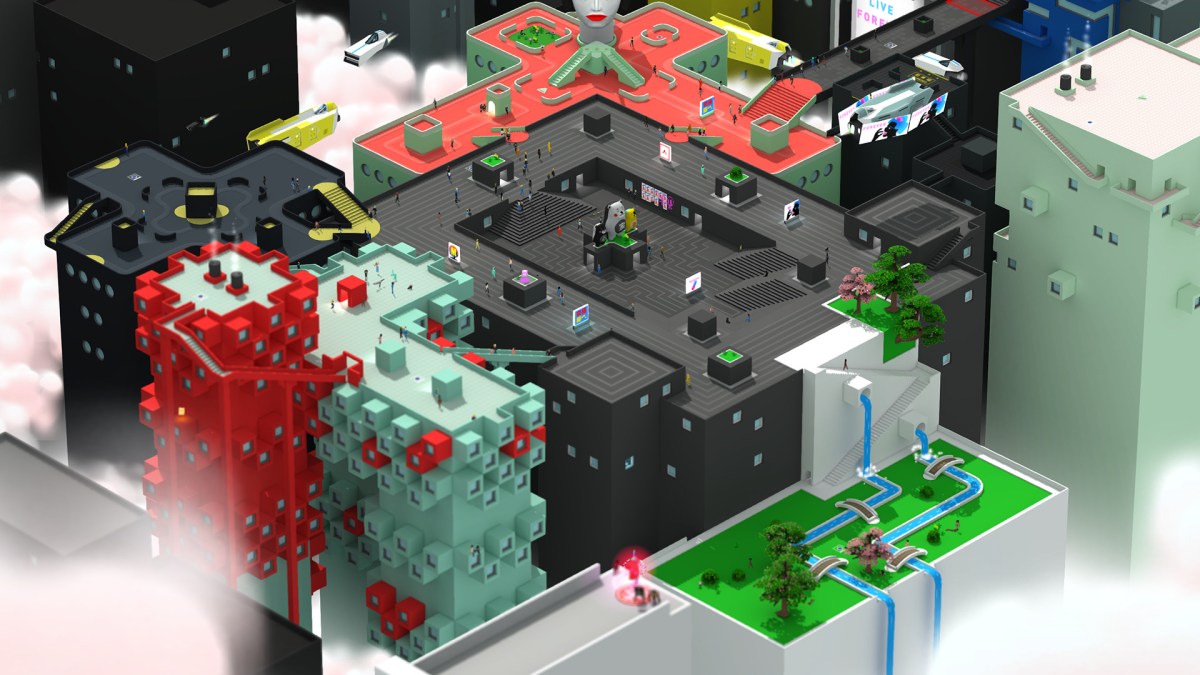Tokyo 42 hands-on preview
As I climbed stairs to the top of a blinding white pyramid with The Simpsons’ elevator to nowhere on my mind I finally reached a narrow lookout point and triggered my mission: kill three targets from on high. All three congregated beneath the peak and fanned out in different directions when the mission started. There was a 10 or 15 second window to off all three. I didn’t think sniping would be this exciting in a pulled back, isometric view, but Tokyo 42 seems like a purer shooter than your average twin-stick.
While making these shots would likely be a bit easier on a mouse and keyboard, the gamepad controls emphasize that Tokyo 42 is a shooter from afar more than a bullet hell or twin-stick, though it uses the big projectiles from the former and basic control scheme from the latter. Clicking the right stick in locks your character — an assassin navigating a seedier world than its bright color belies — into a strafing mode easier for aiming long instances, almost as if the right stick turns into a mouse pointer. I definitely needed it to make those three shots, and I also had to carefully lead targets to make sure they crumpled into a satisfying clump of physics.
Shootouts were just as intense. One bullet kills you, sending you to respawn at the last vending machine you hit up. So opening up on a local gang to earn some gold isn’t an easy grind. On one hand, the somewhat slow-moving projectiles evoke the zoned-out dodging and weaving of a bullet hell, but it also feels grimier, less abstract. While a lot of twin-stick games stick to one plane, Tokyo 42‘s vertical architecture means an enemy on a roof can keep you pinned down. Crouching or sliding behind cover is key when you could easily get airholed by a stray bullet.
The minimalist style and isometric point of view similarly belie Tokyo 42‘s enormous open world. While the inspirations are early Grand Theft Auto and Syndicate, the full map is impressive as the likes of Mirror’s Edge: Catalyst or any Ubisoft game. It’s even more impressive when you consider it comes from a two-person team
Like any modern open-world game, there is a main narrative thread (about assassins, with large pixel portraiture to offer some detailed characters to go with the text) as well as smaller side missions, puzzles, and secrets to discover.
Take your katana to too many citizens, you’ll also trigger an [extremely “Bad and Boujee” voice] Cop Drop, where increasing waves of police airdrop in to dispense state justice (I’ve seen but didn’t reach later levels that include devastating robots). I also got an alert to be on the lookout for a rival assassin when an unassuming NPC turned out to be a cloaked killer who diced me up before I could react. There are stealth opportunities throughout the main story for your character as well; you can even ditch gangs you’ve aggro’d and change clothes to help lose them. Plus there is another button dedicated to putting on your jacket, a long brown duster. And the flailing-arms running animation for spooked NPCs is hilarious.
Little touches like that amid the emergent gameplay are what have me most excited for Tokyo 42, in addition to its austere world with bold blocks of color and dashes of en vogue pink-cyan pop of neon. That look is backed up with straightforward, but intense shooting that feels grounded and dangerous.




